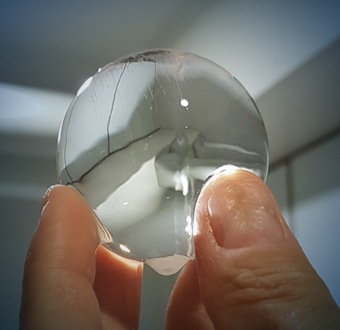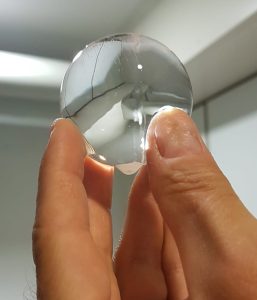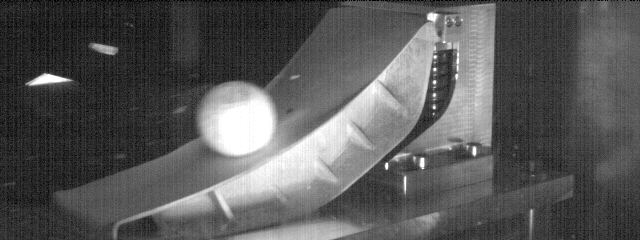Why We Developed a Hail Impact Testing Jig

Have you ever wondered how modern technology and materials are developed to protect you and the aircraft from things such as thunderstorms containing hailstones? Due to their complex failure mechanisms, fiber-reinforced composite parts need to be tested experimentally for such load cases, with sometimes unpredictable results.

Consider Xycomp® DLF™ (Discontinuous Long-Fiber), for instance. For years, this material has shown great promise in replacing complex shaped metallic parts in aerospace applications. Unfortunately, despite very good low-velocity (drop-weight) impact behavior and low knockdown in compression after impact strength, uncertainty was raised early on regarding the high-velocity hail impact behavior of this material, which prevented adoption in locations where such an occurrence might be expected. As one application example, such a load case is especially critical at the front of a turbofan engine, as any material liberated during an impact may be ingested by the engine with possible catastrophic consequences. It was, therefore, necessary to validate the hail impact capabilities of DLF prior to committing to develop such critical parts with it.

Due to the expense and logistics of testing, hail impact data was very limited and in one instance where a customer performed an exploratory test on laminate samples, the results were poor.
To investigate this fully, Greene Tweed’s Advanced Technology Group initiated a TD (technology development) project aiming to better understand the behavior of DLF under high-velocity impact and improve it. After testing validated that low-velocity and high-velocity impact behavior were totally different and that drop-weight testing could not be used to predict hail impact performance, it became clear that the testing capability would be a key component. Flexibility in testing to allow quick research iteration loops was identified as a major factor in the success of the project, but the limited number of recognized testing facilities offering such services, the testing cost, and the ever-expanding restrictions due to the pandemic at the time made it very difficult to realize such a vision. Consequently, it was decided early in 2020 to develop an internal hail impact testing capability.
Many hurdles had to be overcome, from determining how to reach the required speeds of over 200 m/s within the limited space available to finding a way to accurately measure the impact velocity within a confined footprint. The hailstone-making process itself required careful consideration, as a normal “ice-cube” as found in one’s freezer solidifies from the outside inwards, creating severe internal stresses which (as we found out) leads to the breakup of the hailstone during the acceleration phase, turning the equipment into a not very useful snow-cannon. After some planning, more testing, and a couple of iteration loops, the testing capability was eventually finalized, and the actual material investigations could begin.
In its current configuration, the impact testing jig has a chamber allowing components up to a size of 600 x 500 x 300 mm to be tested, at speeds up to 300 m/s. Testing has already been conducted with 2” and 1.5” diameter hailstones. Observations of the test are performed using a high-speed camera, where over 10,000 frames per second can be recorded.
Over the last year, the knowledge gained allowed Greene Tweed to develop and demonstrate novel DLF materials and application design concepts that meet or exceed the high-velocity impact resistance of traditional continuous fiber composites, in addition to obtaining a better understanding of the damage behavior in discontinuous composites. Currently, several Aerospace applications with hail impact requirements are under development, making good use of the internal testing capability and “lessons learned”.
